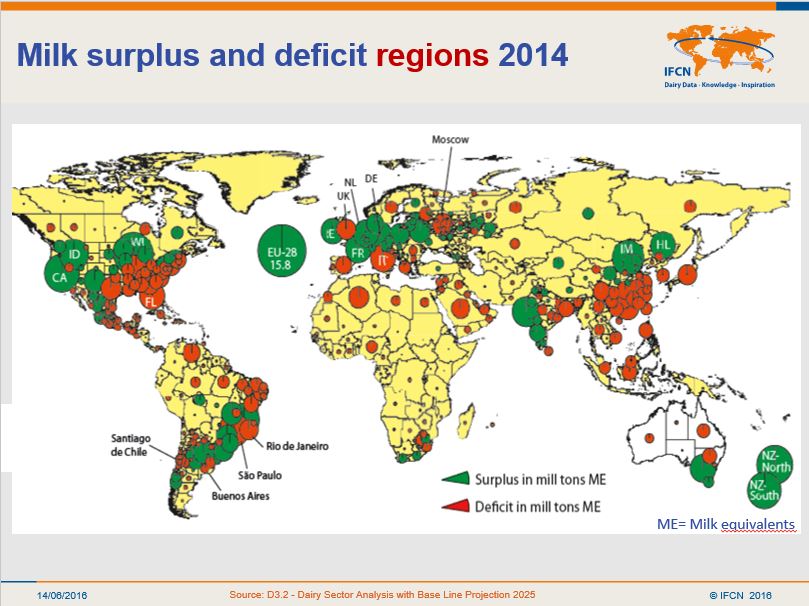



Expert: US Not Price Competitive in World Milk Market
ANALYSIS - The world milk price – it really can’t get any worse, so prepare for an upturn.
Speaking at the Large Dairy Herd Management Conference, Torsten Hemme, Managing Director of the International Farm Comparison Network (IFCN), told US dairy producers that while their prices are substantially higher than the world market, they are not price competitive.
“The world market is only at $22, and in the US it is $35,” he said. “In real terms, the world markets are $9 per hundred weight, while your price is currently $16 per hundred weight for 4 per cent fat and 3 per cent protein.”
He said Germany’s prices are similar to the US, but Germany hasn't taken the lows due to support price mechanisms, but it's now falling much faster and straighter.
“Our [Germany’s] milk price is substantially lower than the US. New Zealand is even lower,” Mr Hemme said. “You might feel lucky that your price in the US is still high, but if you want to pay the farmer $36 and then sell these products at that price on the world market, it doesn't work. US milk at that price point is not competitive in the global market.”

In the US, Mr Hemme said it's interesting that there’re surplus regions and deficit regions.
“Could you imagine the free market regions with a heavy surplus of milk could disconnect from the world market price of commodities? No, because whenever you are in a region which produces tremendous exports, you run the roller coaster ride because you turn too much product into your dairy products.”
So far the US is protected, especially on the federal market. That's why they're a little bit isolated.
Looking at other countries South America has surplus regions in the southern part of Chile and parts of Argentina and Brazil. They are supporting the big cities in those regions. Overall, there's not a big surplus of milk out of this region.
China has a similar pattern to the US. Northern China has surplus regions, while the southern regions are the deficit regions. Cows don't like the hot and humid climate in the southern areas, accounting for the drop in production, he said.
Europe is the second largest exporter of milk globally with production split among different countries.
“India and Europe are basically the driving dairy regions in the world, while New Zealand is not that important,” he said.
Based on standardised milk at 4 per cent fat and 3 per cent protein, milk production is growing substantially, on average 17 million tons per year, which is a little less that the annual milk volume of New Zealand.
“We're producing more every year. We have some extremely good years like 2011 and 2014, which were price-driven,” he said. “Then there are crisis years like 2009 caused by the fuel price jump of 2012 and 2013.”
.JPG)
Prices for crude oil, feed and milk are related and very volatile. The milk industry is now in the third dairy crisis since 2007 on a world level.
“Milk production globally is dominated by small-scale farming systems. The cost of production shows a wide range from $40 to $50 per hundred weight, and the US is currently estimated in the range of $60 to $90 per hundred weight,” he said. “Cost of production even in major low cost dairies has increased to about $70 per hundred weight, and the US will further decrease based on post-quarter restructuring and the exchange rate.”
A big challenge for the US dairy farming system is the strengthening of the US Dollar over the past 16 months. He said resilience of the farming systems is a threat, especially if you are not land-based.
“Can a non-land-based dairy be a future norm, yes or no? The dairy farms in the US, especially in the western part, will get much more capital heavy. The capital income for milk in New Zealand is around six or seven times more than in the California system, so expect the demand of capital to increase,” he said.
The world milk market prices make exports difficult, Mr Hemme said.
“The US dairy market is standing somewhat on thin ice. It takes a while for alignment, but then prices can fall very sharply like what happened in 2014 or early 2015. Perspective for the US dairy industry is very good."



